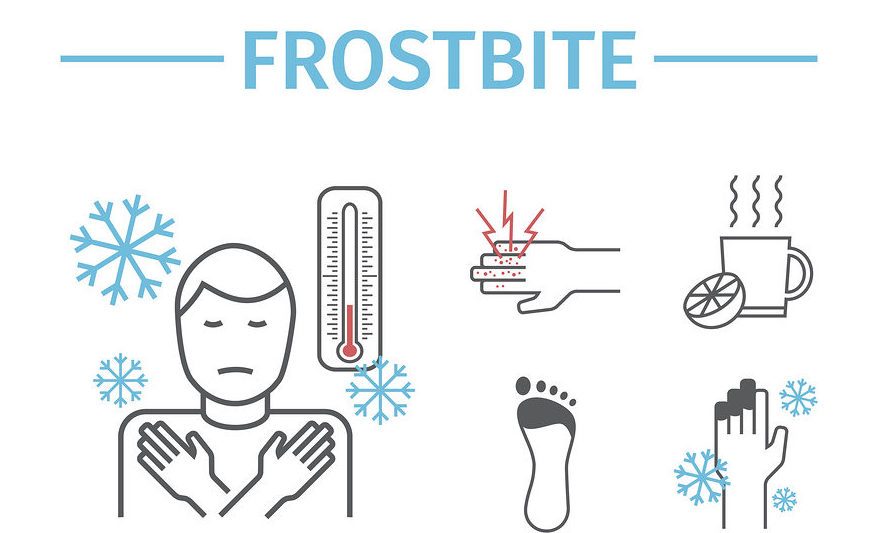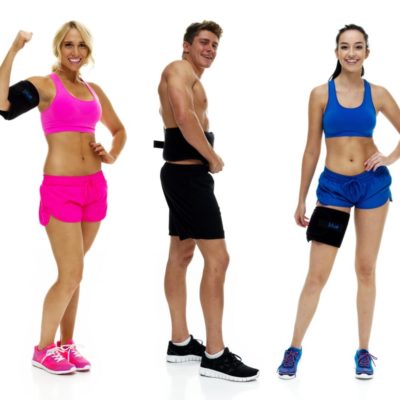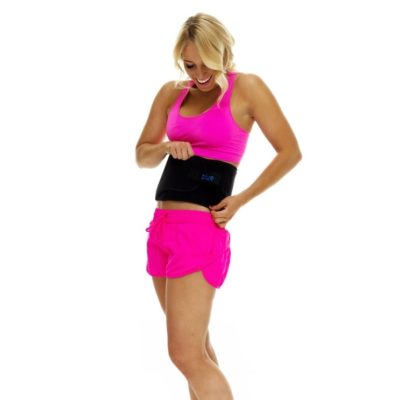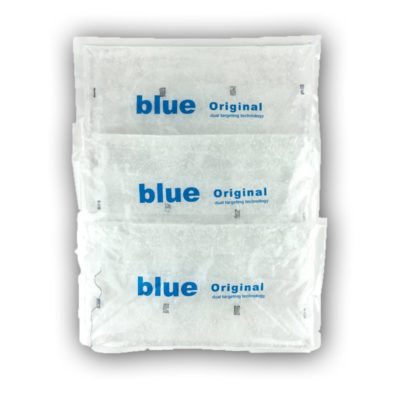The thin line between fat freezing and frostbite
One of the most common objections we get when people first see our product is something along the lines of “I can just strap an ice pack to myself.” This reaction may seem reasonable, at first. The Blue Fat Freeze System is seemingly simple: frozen packs held to target areas with a belt. However, the product is more complex than you might think.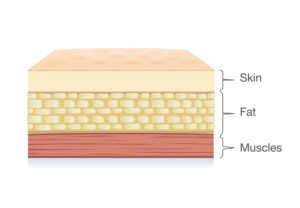
Fat cells “freeze” when they are subjected to cold temperatures. The fat “freezing” is actually the start of a process called cryolipolysis in which fat cells die and are removed from the body.1 Most scientific articles cite a treatment temperature at or below 1°C (34°F), but cold temperatures as high as 7°C (45°F) may also be effective.2 Thus, the fat cells in the treatment area must get this cold for fat “freezing” to occur.
On the other hand, the skin cannot tolerate cold temperatures for very long without being damaged. Touching a metal surface at -15°C (5°F) can lead to frostbite within a few seconds, for example.3 Indeed, ice packs placed directly on the skin can cause frostbite.4
The Blue Fat Freeze system has been specifically designed to apply the right amount of cold temperature to treatment areas, while at the same time minimizing the risk of frostbite. The Blue Fat Freeze cold packs are a precise size and shape intended to maximize cold exposure over a one-hour period. The wrap is not just convenient, but it, too, has been specifically designed to deliver cold to fat cells while offering protection to the overlying skin.
Of course, you could try to do the same thing with a bandage and some ice packs, or a plastic bag, ice cubes and a towel. You could try, but you are not likely to see any benefit. You may also hurt yourself.
First, the Blue Fat Freeze Wraps securely hold the cold packs over the anatomical region you are treating. This delivers constant, consistent cooling. You would have to be very patient indeed to hold a towel in place for an hour at a time. The same is true for bandages. Are you going to wrap the bandage in the same way each day? It seems unlikely. Thus, you would not be able to deliver the precise cold treatment needed to achieve fat “freezing.”
Second, can a towel or bandage protect your skin from frostbite? A thin towel provides better fat cooling, but increases the risk of skin frostbite. A thick towel is just the opposite. How will you know what towel to use? The same is true with bandages—how many layers do you need to treat yourself and protect yourself. The Blue Fat Freeze system takes the guesswork out of the process.
In summary, if you think, “I can do the same thing myself with an ice pack and a towel,” be careful. You are much more likely to place yourself at risk while missing out on the benefits that Blue Fat Freeze has to offer.
The thin line between fat freezing and frostbite
One of the most common objections we get when people first see our product is something along the lines of “I can just strap an ice pack to myself.” This reaction may seem reasonable, at first. The Blue Fat Freeze System is seemingly simple: frozen packs held to target areas with a belt. However, the product is more complex than you might think.
Fat cells “freeze” when they are subjected to cold temperatures. The fat “freezing” is actually the start of a process called cryolipolysis in which fat cells die and are removed from the body.1 Most scientific articles cite a treatment temperature at or below 1°C (34°F), but cold temperatures as high as 7°C (45°F) may also be effective.2 Thus, the fat cells in the treatment area must get this cold for fat “freezing” to occur.
On the other hand, the skin cannot tolerate cold temperatures for very long without being damaged. Touching a metal surface at -15°C (5°F) can lead to frostbite within a few seconds, for example.3 Indeed, ice packs placed directly on the skin can cause frostbite.4
The Blue Fat Freeze system has been specifically designed to apply the right amount of cold temperature to treatment areas, while at the same time minimizing the risk of frostbite. The Blue Fat Freeze cold packs are a precise size and shape intended to maximize cold exposure over a one-hour period. The wrap is not just convenient, but it, too, has been specifically designed to deliver cold to fat cells while offering protection to the overlying skin.
Of course, you could try to do the same thing with a bandage and some ice packs, or a plastic bag, ice cubes and a towel. You could try, but you are not likely to see any benefit. You may also hurt yourself.
First, the Blue Fat Freeze Wraps securely hold the cold packs over the anatomical region you are treating. This delivers constant, consistent cooling. You would have to be very patient indeed to hold a towel in place for an hour at a time. The same is true for bandages. Are you going to wrap the bandage in the same way each day? It seems unlikely. Thus, you would not be able to deliver the precise cold treatment needed to achieve fat “freezing.”
Second, can a towel or bandage protect your skin from frostbite? A thin towel provides better fat cooling, but increases the risk of skin frostbite. A thick towel is just the opposite. How will you know what towel to use? The same is true with bandages—how many layers do you need to treat yourself and protect yourself. The Blue Fat Freeze system takes the guesswork out of the process.
In summary, if you think, “I can do the same thing myself with an ice pack and a towel,” be careful. You are much more likely to place yourself at risk while missing out on the benefits that Blue Fat Freeze has to offer.

Get started using blue today and join thousands who've experienced incredible results!!
References
1. Avram MM, Harry RS. Cryolipolysis for Subcutaneous Fat Layer Reduction. Lasers Surg Med. 2009;41(10):703-708. doi:10.1002/lsm.20864
2. Alizadeh Z, Halabchi F, Mazaheri R, Abolhasani M, Tabesh M. Review of the Mechanisms and Effects of Noninvasive Body Contouring Devices on Cellulite and Subcutaneous Fat. International Journal of Endocrinology and Metabolism. 2016;14(4):e36727. doi:10.5812/ijem.36727
3. Geng Q, Holmer I, Hartog DE, et al. Temperature Limit Values for Touching Cold Surfaces with the Fingertip. Ann Occup Hyg. 2006;50(8):851-862. doi:10.1093/annhyg/mel030
4. Graham CA, Stevenson J. Frozen Chips: An Unusual Cause of Severe Frostbite Injury. Br J Sports Med. 2000;34(5):382-383.



